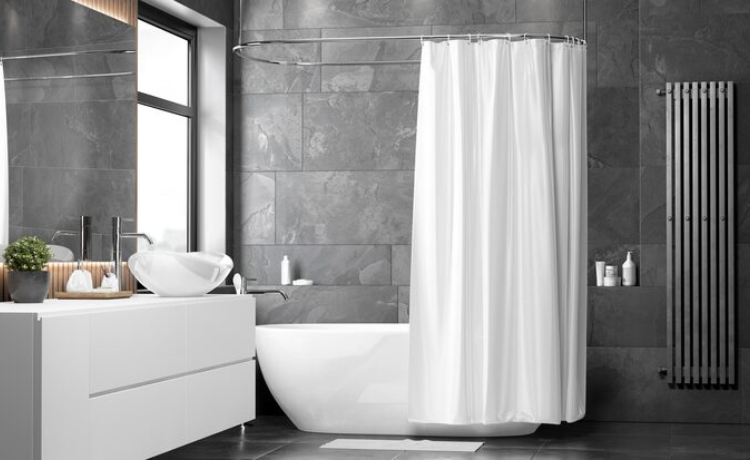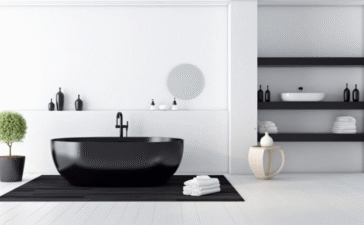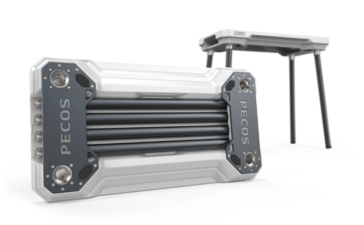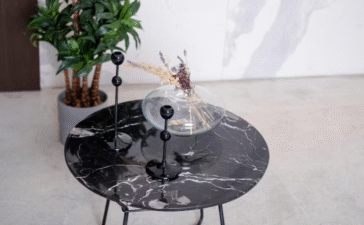Selecting the right shower curtain sizes transforms your bathroom from functional to fabulous. The difference between a perfectly fitted curtain and one that’s too short or too wide can determine whether water stays contained in your shower or creates puddles on your bathroom floor.
Many homeowners underestimate the impact of proper shower curtain dimensions on their daily routine. A curtain that’s too small leaves gaps for water to escape, while an oversized one creates unsightly bunching and reduces the visual appeal of your space. Beyond functionality, the right shower curtain sizes enhances your bathroom’s aesthetic appeal and creates a cohesive design that reflects your personal style.
This comprehensive guide will walk you through everything you need to know about shower curtain dimensions, from standard measurements to custom solutions. Whether you’re renovating your master bathroom or updating a guest powder room, understanding these fundamentals will help you make an informed decision that combines practicality with visual appeal.
Understanding shower curtain sizes
Shower curtain measurements follow industry standards that accommodate most residential bathrooms. These standardized dimensions have evolved to fit common tub and shower configurations, making it easier for homeowners to find suitable options without extensive customization.
Standard shower curtain sizes
The most common shower curtain dimensions are 72 inches by 72 inches, which fits the majority of standard bathtub and shower combinations. This square format works well for typical residential bathrooms where the shower rod spans approximately 60 inches, allowing for adequate coverage with some gathering for visual appeal.
The 72×84 shower curtain offers extra length for taller spaces or when you prefer more coverage. This elongated option works particularly well in bathrooms with high ceilings or when the shower rod is positioned higher than standard height. The additional 12 inches of length ensures complete coverage without leaving gaps near the bottom.
For smaller spaces, the 54×78 shower curtain provides an ideal solution for compact shower stalls. This size accommodates narrow shower areas commonly found in apartments, guest bathrooms, or powder rooms where space efficiency is paramount.
Extra Wide and Extra Long Shower Curtains
Wide shower areas require specialized dimensions to maintain proper water containment. Extra wide shower curtains measuring 108 inches by 72 inches accommodate double-wide shower openings or walk-in showers with expansive openings. These curtains often work best when paired with a sturdy rod system that can support the additional weight and width.
Extra long shower curtain options extend beyond the standard 72-inch length to accommodate unique architectural features. Bathrooms with vaulted ceilings, raised shower rods, or floor-to-ceiling tile work benefit from these extended dimensions. The additional length creates a dramatic visual impact while ensuring complete water protection.
Shower Stall and Custom Sizes
Shower stall curtains require precise measurements to fit compact spaces effectively. These smaller configurations often measure 54 inches wide by 78 inches long, designed specifically for prefabricated shower stalls common in apartments and condominiums.
Custom shower curtain sizes address unique architectural challenges that standard dimensions cannot accommodate. Angled ceilings, irregular shower openings, or vintage bathroom configurations may require made-to-measure solutions. Working with a professional measurer ensures accuracy when standard options won’t suffice.
How to Measure Your Bathroom for the Perfect Shower Curtain
Accurate measurements form the foundation of successful shower curtain selection. Professional-quality results require attention to detail and understanding how different measurement approaches affect the final appearance and functionality.
Measure the Width of Your Shower Area
Begin by measuring the shower width from wall to wall at the point where your curtain rod will be installed. Use a metal tape measure for accuracy, ensuring the tape remains level throughout the measurement process. Record this measurement in inches for easy comparison with standard curtain dimensions.
Add approximately 12 to 18 inches to your measured width to achieve proper fullness and coverage. This additional width allows the curtain to gather naturally, creating visual appeal while ensuring complete coverage when the curtain is drawn. Insufficient width results in a stretched appearance that compromises both aesthetics and water protection.
Consider the type of curtain rod or track system you’ll be using, as different hardware configurations may affect the overall width requirements. Tension rods require different spacing considerations compared to permanently mounted hardware systems.
Measure the Length of Your Shower Curtain
Measuring shower curtain length requires determining the distance from your shower rod to the desired endpoint. Most professionals recommend positioning the bottom edge of your curtain approximately 6 to 8 inches above the floor to prevent water accumulation and mildew growth.
Start your measurement at the bottom of the curtain rod or track system, not from the mounting brackets. This approach accounts for the actual hanging position and ensures accurate length calculations. Extend your measuring tape straight down to your desired endpoint, avoiding any obstacles or irregularities in the wall surface.
Account for the hanging mechanism when calculating final length requirements. Curtain rings, grommets, or built-in loops will affect the final hanging position, typically reducing the effective length by 2 to 4 inches depending on the specific hardware style.
Material Considerations for Shower Curtains
The choice of shower curtain material significantly impacts both functionality and longevity. Different materials offer varying levels of water resistance, durability, and aesthetic appeal, making material selection a crucial component of your decision-making process.
Waterproof and Water-Resistant Materials
Vinyl shower curtains provide excellent water protection at an economical price point. Modern vinyl formulations resist mildew and maintain their appearance through regular use and cleaning. Heavy-gauge vinyl options offer superior durability and tear resistance compared to lightweight alternatives.
Polyester shower curtains combine water resistance with improved breathability compared to vinyl options. Many polyester curtains feature special coatings or treatments that enhance their water-repelling properties while maintaining a more fabric-like appearance and feel.
PEVA materials offer an eco-friendly alternative to traditional vinyl without compromising water protection. These chlorine-free materials provide similar functionality to vinyl while reducing environmental impact and eliminating the distinctive odor associated with some vinyl products.
Aesthetic Materials
Cotton shower curtains bring natural texture and sophistication to bathroom design. While requiring a separate liner for water protection, cotton curtains offer unlimited design possibilities and integrate seamlessly with various decorating styles. High-quality cotton options resist shrinking and maintain their appearance through multiple wash cycles.
Linen shower curtains create an upscale, spa-like atmosphere that complements contemporary and traditional bathroom designs. The natural variations in linen weave add visual interest while providing the refined appearance that many homeowners seek in their personal spaces.
Fabric shower curtains encompass a wide range of materials and patterns, from luxurious silk-look options to casual canvas styles. These curtains typically require liner protection but offer unmatched design flexibility and the ability to coordinate with existing bathroom decor elements.
Why the Right shower curtain sizes Matters
Proper shower curtain fit extends beyond simple aesthetics to encompass practical considerations that affect your daily bathroom experience. The relationship between curtain size, water containment, and overall bathroom functionality demonstrates why careful sizing matters.
Correctly sized shower curtains prevent water spillage that can damage flooring, create slip hazards, and contribute to mold and mildew growth. Water that escapes the shower area can seep into subflooring, causing costly structural damage over time. A properly fitted curtain acts as your first line of defense against these potential problems.
The visual impact of well-proportioned shower curtains cannot be overstated. Curtains that are too small create an unfinished appearance, while oversized options can overwhelm smaller spaces. The right proportions enhance your bathroom’s overall design and contribute to a cohesive, professionally decorated appearance.
Shower curtain functionality improves dramatically when dimensions match your specific space requirements. Properly sized curtains operate smoothly along their tracks, resist billowing during shower use, and maintain their position without constant adjustment.
How to Maintain Your Shower Curtain
Regular maintenance extends the life of your shower curtain while preserving its appearance and functionality. Different materials require specific care approaches, but fundamental principles apply across all curtain types.
Establish a weekly cleaning routine that includes wiping down your curtain with a mild cleaning solution. This simple step prevents soap scum buildup and reduces the likelihood of mildew formation. Pay particular attention to the bottom edge and areas where the curtain contacts the tub or shower floor.
Monthly deep cleaning helps maintain your curtain’s appearance and hygiene. Machine-washable curtains benefit from gentle cycle washing with mild detergent, while specialty materials may require professional cleaning or specific care products. Always consult manufacturer guidelines before attempting any cleaning procedures.
Mildew prevention strategies include ensuring adequate bathroom ventilation and allowing your curtain to dry completely between uses. Consider using a shower curtain liner as an additional protective barrier, particularly with fabric curtains that are more susceptible to water damage.
Expert Tips on Choosing the Right Shower Curtain for Your Bathroom
Professional designers and bathroom renovation experts consistently recommend specific approaches to shower curtain selection that maximize both functionality and visual appeal. These insights can help you avoid common mistakes and achieve professional-quality results.
Consider your bathroom’s overall design theme when selecting curtain colors and patterns. Neutral tones provide versatility and longevity, while bold patterns can serve as focal points in otherwise subdued spaces. Remember that shower curtains occupy significant visual space and will influence your bathroom’s overall aesthetic.
Coordinate your shower curtain with complementary accessories including matching liners, decorative hooks, and towel sets. This unified approach creates a cohesive design that appears intentional and professionally planned. Many manufacturers offer complete collections that simplify the coordination process.
Invest in quality hardware that can support your chosen curtain’s weight and withstand daily use. Heavy curtains require robust rod systems, while lightweight options can utilize more economical hanging solutions. Proper hardware installation ensures smooth operation and prevents premature wear.
Frequently Asked Questions
What is the most common shower curtain sizes?
The standard 72×72 inch shower curtain is the most commonly used size, fitting the majority of residential bathtubs and shower combinations. This dimension accommodates typical shower rod spans of 60 inches while providing adequate coverage and visual appeal.
How do I know if my shower curtain is the right size?
A properly sized shower curtain should extend beyond your shower or tub opening by 6 to 12 inches on each side when fully closed. The bottom should hang 6 to 8 inches above the floor, and there should be no gaps that allow water to escape.
Can I use a standard shower curtain for a walk-in shower?
Standard shower curtains may work for walk-in showers depending on the opening width, but many walk-in configurations require extra-wide options measuring 108 inches or custom solutions to ensure complete coverage.
What’s the difference between a shower curtain and a shower liner?
Shower curtains provide the decorative element and primary water barrier, while liners offer additional water protection, particularly for fabric curtains. Many setups use both components for optimal functionality and appearance.
How often should I replace my shower curtain?
Quality shower curtains typically last 6 to 12 months with regular use, though this varies based on material quality, maintenance practices, and usage frequency. Signs for replacement include persistent odors, visible mildew, or deteriorating water resistance.
Do I need special curtains for curved shower rods?
Curved shower rods work with standard shower curtains but may require additional width to accommodate the rod’s curved shape. The curve creates more interior space but may need extra curtain width for complete coverage.
You would also like: “Long Curtains“
Making the Right Choice for Your Space
Selecting the perfect shower curtain sizes combines practical measurements with aesthetic considerations to create a bathroom space that functions beautifully. The guidelines presented here provide a foundation for making informed decisions that will serve your needs for years to come.
Remember that proper sizing is just one component of successful shower curtain selection. Material choice, maintenance requirements, and coordination with existing decor all contribute to your satisfaction with the final result. Take time to measure accurately, consider your specific needs, and choose quality products that will withstand daily use.
Transform your bathroom experience by applying these professional insights to your next shower curtain purchase. The difference between adequate and exceptional results often lies in attention to these fundamental details.












